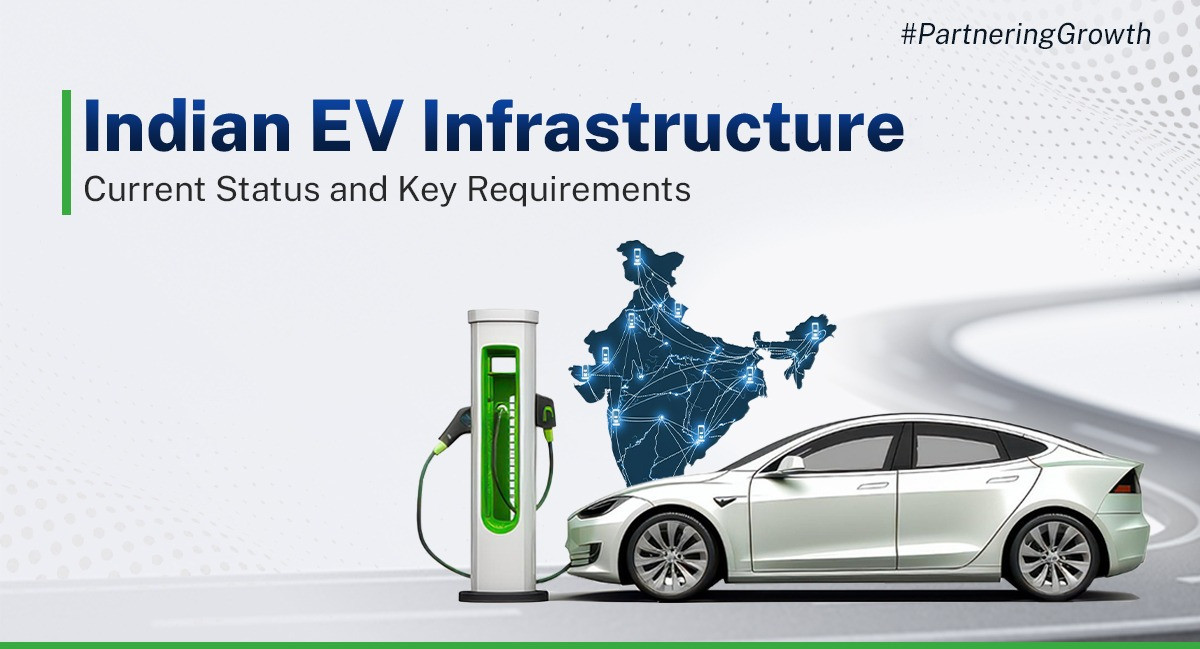


The conversation around electric vehicles (EVs) in India has moved well beyond curiosity. From city streets to rural highways, EVs are slowly becoming a part of everyday transport. But while the vehicles themselves are advancing quickly, the story of EV adoption is really tied to something less glamorous, and that is, the infrastructure that supports them. Developing and maintaining the EV infrastructure on scale still remains a challenge.
Where we stand today
India has made visible progress in building EV infrastructure. Charging stations are now appearing not just in major cities but also along national highways. Energy companies, automotive manufacturers, and even start-ups are entering this space, experimenting with fast-charging solutions, battery-swapping models, and renewable-powered stations.
As of August 1, 2025, India had a total of 29,277 public EV charging stations installed nationwide, showing a rapid growth from just 5,151 stations in December 2022. These include a significant presence in Tier-2 cities, where 4,625 charging stations were operational as of April 1, 2025.
Government policies and incentives have also played an important role. From the FAME schemes to state-level EV policies, there is an active push to encourage both public and private investment. The presence of EV-ready infrastructure in metro cities shows that change is already underway. Yet, for a country of India’s scale, this is only the beginning.
What’s missing
The current network of charging points is still thin compared to the size of the country and the number of vehicles on the road. For many potential EV buyers, the lack of reliable charging options remains the biggest hesitation. This is especially true in tier-2 and tier-3 cities, where awareness of EVs is growing but infrastructure lags behind.
However, the government’s PM E-Drive Scheme has allocated Rs. 2,000 crore to support setting up fast-charging stations across the country, targeting highways, metro cities, tier-2 and tier-3 towns, and rural areas, aiming to cover over 72,300 stations by 2026, showcasing the government’s dedication to developing EV infrastructure in tier 2 & 3 cities.
Another challenge is the speed and consistency of charging. While fast chargers exist, they are not yet widespread. In residential areas, the availability of dedicated charging setups is limited, particularly in apartment complexes where shared parking is common. Add to this the need for uniform standards for connectors and payment systems, and the gaps become clearer.
Key requirements going forward
To accelerate EV adoption, infrastructure must grow at the same pace as vehicle sales, if not faster.
This, in turn, means focusing on:
1. Wider coverage: Charging stations need to extend beyond metro cities to highways, smaller towns, and rural areas.
2. Interoperability: A standardised charging ecosystem that allows any EV to use any charging point seamlessly.
3. Faster charging solutions: Making high-speed chargers the norm, not the exception.
4. Residential readiness: Enabling easy installation of chargers in housing complexes and office spaces.
5. Sustainable power sources: Integrating solar and other renewables to make charging greener and more cost-effective.
The bigger picture
The development of EV infrastructure is not just about convenience; it’s about trust. When people see that charging is as accessible and easy as refuelling, the hesitation to switch reduces dramatically. At the same time, a strong charging network can also support commercial adoption, from electric buses to logistics fleets.
India has taken promising steps in building EV infrastructure, but the road ahead is still long. Bridging the gaps in accessibility, speed, and standardisation will be essential for EVs to become truly mainstream. The good news is that the momentum is here, and with consistent investment and planning, the foundation for a robust, future-ready EV ecosystem can be laid.